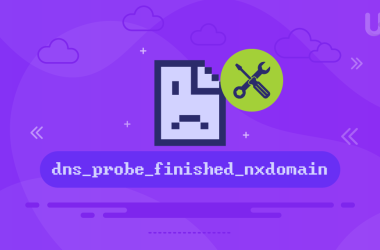Website traffic is the foundation of online growth. Without visitors, it’s hard for any business to gain visibility, build trust, or generate sales. More traffic means more opportunities to connect with your audience and turn clicks into loyal customers.
Traffic comes from many sources, such as search engines, social media, paid ads, and referrals from other websites. In this blog, we’ll share practical strategies you can use to attract more visitors and keep them engaged with your content.
Key Takeaways: Best Ways To Drive Traffic
- Backlinks and partnerships improve visibility: High-quality backlinks from trusted websites enhance SEO authority and provide referral traffic. Guest posting, collaborations, and networking within your niche strengthen both credibility and search rankings.
- Website traffic is essential for growth: Without visitors, even the best-designed website or product will go unnoticed. Traffic increases brand visibility, builds trust, and creates opportunities for conversions and revenue.
- SEO and content marketing provide long-term results: Optimizing your site for search engines and consistently publishing valuable content helps you attract organic visitors over time. High-quality blogs, videos, and guides establish authority and keep your audience engaged.
- Paid ads and influencer collaborations offer quick exposure: Paid search and social campaigns, along with influencer partnerships, help you reach targeted audiences immediately. While they may require investment, they deliver fast results and complement organic strategies.
- User experience (UX) impacts retention: A mobile-friendly, fast-loading website with clear navigation and strong calls-to-action keeps visitors engaged. Good UX reduces bounce rates and encourages repeat visits, making your traffic more valuable.
- Retention strategies boost repeat traffic: Email newsletters, push notifications, and referral programs bring users back to your website. By nurturing relationships with your audience, you turn one-time visitors into loyal followers and potential customers.
- Updating and republishing old content restores value: Refreshing outdated blogs with new insights, images, and keywords can help recover lost search rankings and attract fresh traffic. This strategy maximizes the value of your existing content.
Understanding Website Traffic
Website traffic simply means the number of people who visit your site. It’s a vital metric because more visitors often lead to greater brand awareness, higher chances of engagement, and increased sales. Without steady traffic, even the best products or services may go unnoticed.
There are different types of website traffic:
- Organic traffic comes from search engines when people find your site through unpaid search results.
- Direct traffic happens when users type your website address directly into their browser.
- Referral traffic comes from other websites linking to yours, such as blogs, directories, or news sites.
- Social traffic is generated when people click links from social platforms like Facebook, Instagram, or LinkedIn.
- Paid traffic comes from advertising campaigns such as Google Ads or social media ads.
Relying on only one source of traffic can be risky. If a platform changes its rules or your ranking drops, your visitors may decline sharply. That’s why it’s important to diversify your traffic sources and create a healthy mix of organic, social, referral, and paid visitors.
Optimize for Search Engines (SEO)
Search Engine Optimization remains one of the strongest ways to drive consistent, long-term traffic to your website. The process begins with keyword research, which helps you understand the exact words and phrases your audience is searching for. By weaving these terms naturally into your pages, you increase the chances of showing up in search results where potential visitors are already looking.
On-page SEO plays an equally important role. Clear titles, compelling meta descriptions, structured headings, and well-optimized images all make your content easier to understand for both readers and search engines. Behind the scenes, technical SEO ensures your site runs smoothly. Fast load times, mobile responsiveness, and crawlable site structures help search engines index your pages properly and reward you with higher rankings.
Of course, SEO is not just about mechanics; it is also about content quality. Publishing valuable, detailed, and regularly updated content signals authority and relevance to search engines. Internal links strengthen this further by guiding visitors to related content and helping distribute page authority across your site. Together, these elements form a solid SEO foundation that steadily attracts organic traffic without relying on ads.
Ready to Grow Your Website Traffic?
The right hosting can make all the difference in your SEO and traffic growth. Power your site with UltaHost SEO VPS and enjoy faster speeds, better performance, and improved rankings. Start optimizing your traffic strategy today.
Leverage Content Marketing
Content marketing is about creating material that your audience actually wants to consume. Instead of interrupting them with ads, you draw people in with helpful, entertaining, or insightful resources. This could be in the form of articles, guides, videos, case studies, or infographics, depending on what resonates most with your target readers.
Consistency is key in content marketing. When you publish on a regular schedule, you not only keep your site active but also give visitors a reason to return. Over time, this builds trust and loyalty, as audiences begin to see your website as a reliable source of information.
Another smart approach is to repurpose content across different channels. For example, a single blog post can become a video for YouTube, a slide deck for LinkedIn, or a short infographic for Pinterest. This expands your reach without always creating something entirely new.
Ultimately, content marketing works because it provides real value first. Readers who learn something useful from your content are more likely to share it, revisit your site, and eventually become customers.
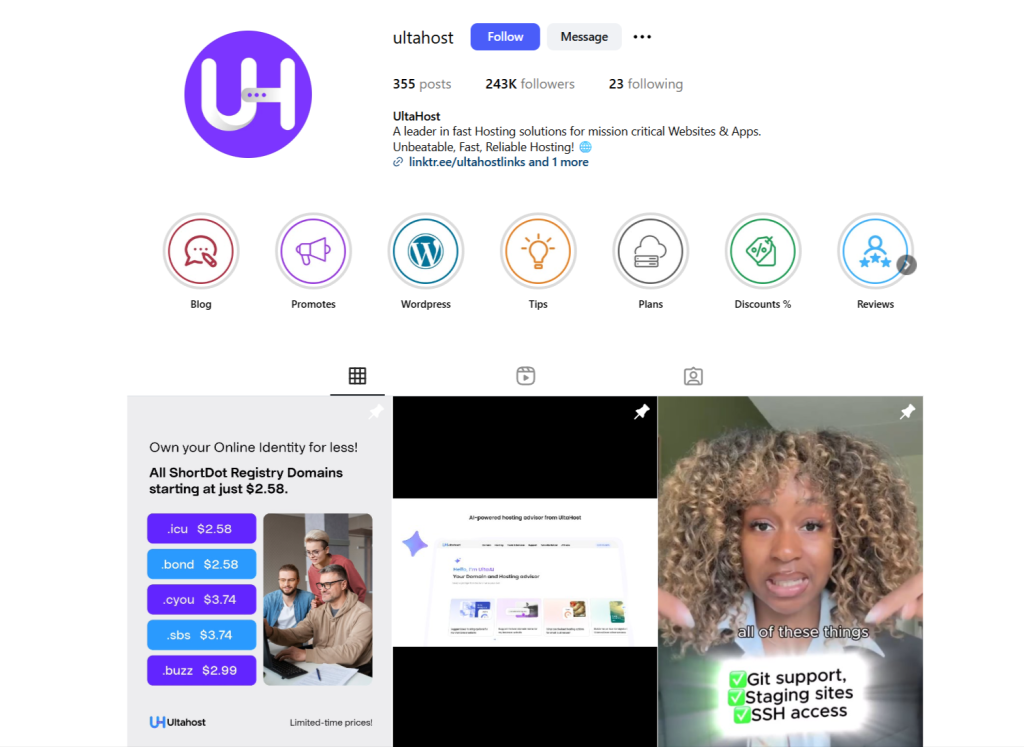
Social media has become one of the most direct ways to connect with your audience and bring them to your website. The key is not to be present everywhere, but to focus on the platforms where your ideal customers already spend their time. A fashion brand might thrive on Instagram or TikTok, while a B2B company often sees stronger results from LinkedIn. By choosing carefully, you ensure that your efforts translate into meaningful traffic.
The content you post matters just as much as the platform. Short videos, interactive stories, live sessions, and even quick polls are all ways to keep users engaged and curious enough to click through to your site. Hashtags and trending topics can extend your reach beyond your immediate followers, while collaborations with influencers can introduce your brand to entirely new communities. Each post should also include a clear call-to-action, so followers know exactly where to go if they want to learn more.
Here’s a snapshot of how different platforms perform when it comes to driving traffic:
| Platform | Best For | Example Content | Traffic Potential |
| Community building, ads, broad reach | Groups, live streams, ads | High with ads | |
| Visual branding, product showcases | Reels, stories, influencer posts | Strong for B2C | |
| B2B networking, professional content | Articles, thought leadership | High for B2B | |
| Twitter/X | Real-time updates, trending topics | News, quick tips, threads | Moderate to high |
| Visual discovery, evergreen content | Infographics, step-by-step guides | Long-term traffic | |
| TikTok | Viral short-form videos, brand awareness | Tutorials, behind-the-scenes | Very high if viral |
When used strategically, social media not only spreads awareness but also drives users to your website where they can take the next step, whether that’s reading more content, signing up for a newsletter, or making a purchase.
Invest in Paid Advertising
Paid advertising can deliver instant visibility for your website. Search ads, such as Google Ads, put your site at the top of search results when people look for specific keywords. This works especially well for targeting high-intent users who are ready to take action.
Social platforms like Facebook, Instagram, and LinkedIn also offer powerful advertising options. These allow you to reach people based on demographics, interests, and behaviors, making it easier to connect with your ideal audience. Retargeting ads take it a step further by reminding past visitors about your brand and encouraging them to return.
Benefits of paid traffic:
- Delivers fast results.
- Highly targeted to specific audiences.
- Effective for promotions and product launches.
Limitations:
- Can be expensive if not managed well.
- Traffic disappears once you stop paying.
- Requires ongoing testing and optimization.
Build Quality Backlinks
Backlinks act like votes of confidence from other websites. They not only bring referral traffic but also improve your search engine rankings. High-quality backlinks from respected sources signal to Google that your site is trustworthy.
Ways to build strong backlinks include:
- Guest posting: Contribute articles to other blogs in your niche and link back to your site.
- Networking: Build relationships with industry experts who may naturally mention your work.
- Broken link building: Find outdated links on other sites and suggest your content as a replacement.
- Directories and mentions: Submit your site to reputable business listings or niche directories.
Over time, these strategies strengthen your site’s domain authority, making it easier to rank and attract organic visitors.
Email Marketing Strategies
Email is still one of the most reliable tools for driving repeat traffic. Unlike social media, you own your email list and can communicate directly with subscribers. Building a strong list is the first step, followed by segmenting it to send the right messages to the right groups.
Key practices to boost traffic through email marketing:
- Personalized newsletters keep subscribers informed about your latest content, offers, or products.
- Automation helps with welcome flows, reminders, and promotions that run without manual effort.
- Strong CTAs within emails guide readers back to your site for full details.
By sharing valuable content and linking back to your pages, email becomes a consistent and cost-effective traffic source.
Boost Engagement with Reliable Email Hosting
Bring visitors back to your website with personalized email campaigns that build trust and drive clicks. Get started with UltaHost Email Hosting to streamline communication and grow your online presence.
Engage in Online Communities
Joining online communities allows you to reach people where they are already looking for answers. Sites like Quora, Reddit, and industry forums provide opportunities to demonstrate your expertise.
- Answer questions with detailed, helpful responses.
- Share insights and experiences, not just links.
- Build trust over time so people naturally visit your site for more.
This method may not generate instant spikes in traffic, but it attracts highly engaged visitors who are genuinely interested in your knowledge and offerings.
Improve User Experience (UX)
Getting visitors to your website is only the first step. If the experience is poor, they’ll leave quickly, and you’ll miss out on potential leads or sales. A great user experience keeps people engaged, encourages them to explore multiple pages, and makes them more likely to return.
Mobile-friendliness is non-negotiable today, with the majority of users browsing on their phones. Your design should adapt seamlessly to different screen sizes and remain easy to navigate. Site speed is equally important: research shows that even a one-second delay can cause a noticeable drop in conversions. Tools like Google PageSpeed Insights can help identify issues slowing your site down.
Navigation plays a big role in keeping visitors comfortable. A clear, simple menu structure allows users to quickly find what they are looking for without confusion. Adding strong, visible calls to action (CTAs), such as “Sign Up,” “Get Started,” or “Read More”, guides users toward taking the next step. Combined, these elements reduce bounce rates and create a smoother, more enjoyable experience that encourages return visits.
Collaborate with Influencers and Partners
Influencer marketing is no longer just for big brands. Micro-influencers with smaller but highly engaged audiences often deliver even better results because their followers trust them more. Collaborating with the right influencer in your niche gives your brand targeted exposure and social proof, which can drive traffic directly to your site.
Beyond influencers, partnerships with other businesses or content creators can be just as powerful. Hosting joint webinars, co-writing blog posts or eBooks, or organizing giveaways are effective ways to cross-promote. For example, a fitness coach and a nutritionist could collaborate on a webinar, each bringing their own audience to the event and both benefiting from the exposure.
The key is to choose partners who share a similar audience but aren’t direct competitors. By leveraging each other’s networks, both sides expand their reach and build credibility in front of new people.
Static content like articles and images is important, but interactive content takes engagement a step further. It encourages users to participate actively, which not only increases the time they spend on your site but also makes your brand more memorable.
Examples of interactive content include:
- Quizzes: Fun tools that give users personalized results, such as “Which Product Fits Your Style?”
- Calculators: Practical tools that solve problems, like mortgage or savings calculators.
- Polls and surveys: Quick ways to get opinions while making users feel involved.
- Interactive infographics or videos: Visual, clickable experiences that keep people exploring.
Because interactive content is enjoyable, people are more likely to share it with their friends or post it on social media, giving your site organic exposure. Over time, this not only drives more traffic but also builds stronger brand awareness.
Optimize for Local SEO
If your business serves customers in specific areas, local SEO is one of the most effective ways to attract highly qualified traffic. Many people search for businesses “near me” on Google, and showing up in those results can bring customers straight to your door.
The first step is to claim and optimize your Google Business Profile. Add accurate information about your business, including address, phone number, website, and operating hours. Upload high-quality photos to give potential customers a sense of what to expect.
Targeting local keywords helps you appear in area-specific searches. For example, instead of just “plumber,” aim for “plumber in NewYork” or “emergency plumbing in Washington.” These keywords capture users who are ready to take action.
Finally, collecting reviews is essential. Positive reviews improve your visibility and build trust with potential customers. Encourage satisfied clients to leave feedback, and respond to reviews to show that your business values customer input. Combined, these strategies make your business easier to find and more attractive to local searchers.
Start a YouTube Channel or Podcast
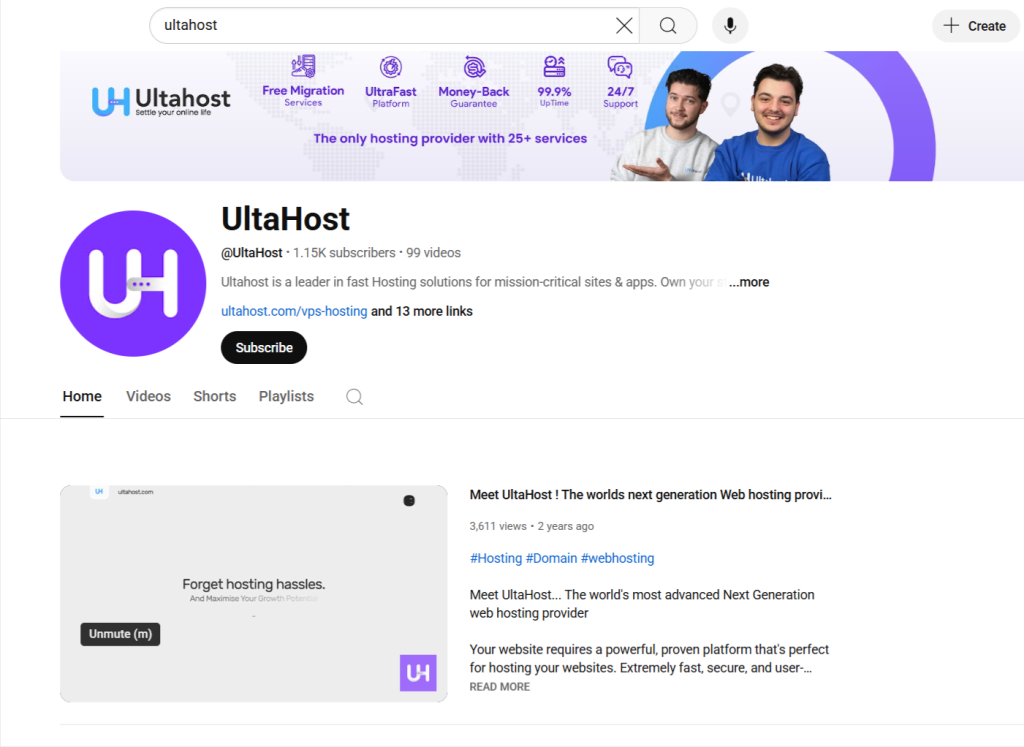
Video and audio content are powerful ways to reach new audiences and direct them back to your website. A YouTube channel allows you to create tutorials, Q&A sessions, product demos, or even behind-the-scenes content that builds trust with viewers. Similarly, podcasts let you connect with listeners in a more personal way, especially in niches where storytelling or expert discussions matter.
Always include backlinks in your video descriptions or podcast show notes to guide people back to your site. You can also repurpose video or audio into blog articles, social media posts, or email content, maximizing the reach of each piece. This cross-channel approach helps you attract traffic from different platforms while reinforcing your brand.
Use Affiliate and Referral Programs
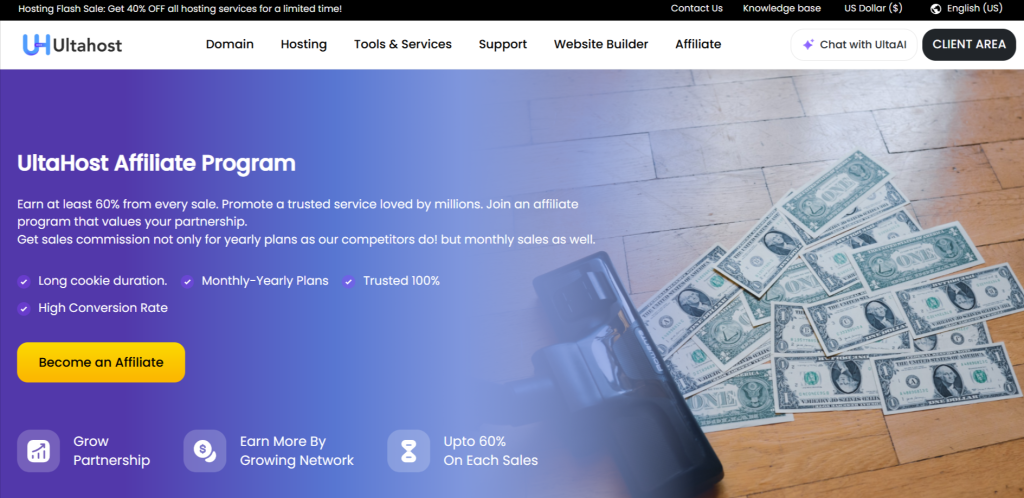
Affiliate and referral marketing turn your audience and customers into active promoters of your business. With an affiliate program, you reward partners or creators with a commission for every sale or lead they bring in through their unique link. Referral programs work similarly but are aimed at your existing customers, offering them discounts or perks for inviting friends.
The real power here lies in word-of-mouth advocacy. People are more likely to trust recommendations from friends or influencers they follow, which makes this an effective way to drive quality traffic and boost conversions at the same time.
Turn Traffic Into Profit with Reseller Hosting
Don’t just grow your website traffic, turn it into a business opportunity. With UltaHost Reseller Hosting, you can start your own hosting service, generate recurring income, and scale alongside your audience.
Submit Your Website to Online Directories
Online directories and listings can still provide a steady stream of referral traffic, especially in niche industries. Adding your website to directories relevant to your field increases your chances of being discovered by people actively searching for products or services like yours.
- Business listings on platforms such as Yelp or Yellow Pages boost credibility.
- Niche directories specific to your industry help you reach targeted audiences.
- Many directories also provide backlinks, which strengthen your SEO and online visibility.
It’s a small but worthwhile step that can contribute to both short-term and long-term traffic growth.
Update and Republish Old Content
Your existing content is a hidden goldmine. Blogs that once ranked well or attracted traffic may lose visibility as information becomes outdated. By refreshing these posts with new insights, updated statistics, fresh images, or current keywords, you can breathe new life into them.
Search engines value updated content, so republishing older articles helps you regain lost rankings and drive organic traffic back to your site. It also shows readers that your brand stays current and relevant in your industry.
Engage in Guest Podcasting and Interviews
Being featured on someone else’s platform exposes you to an entirely new audience. Guest podcasting, webinars, or even interviews on YouTube and Instagram Live allow you to showcase your expertise while tapping into another creator’s community.
During these appearances, you can share insights, answer questions, and naturally direct listeners or viewers back to your website. This kind of audience crossover builds trust quickly because the host is essentially endorsing you, making it one of the most authentic ways to gain new traffic.
Use Push Notifications
Push notifications are short, timely messages sent directly to a visitor’s device, even after they’ve left your website. They’re an affordable and effective way to re-engage past visitors and encourage them to return.
You can use push notifications to:
- Announce new blog posts.
- Share limited-time offers or discounts.
- Remind users of upcoming events or product launches.
Since they deliver instant visibility, push notifications help keep your audience connected and active, boosting repeat traffic without relying solely on email or ads.
Track and Analyze Performance
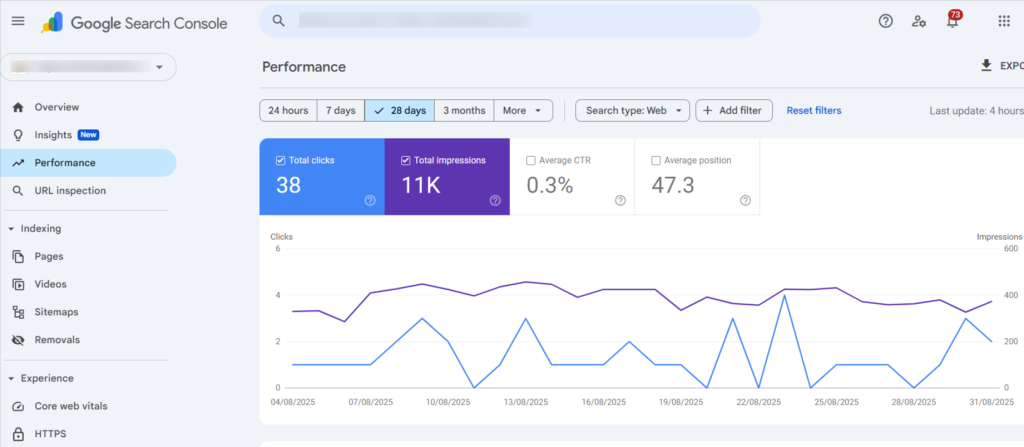
All the strategies in the world won’t matter if you don’t know what’s working. Tracking performance ensures you understand where traffic comes from, how visitors behave on your site, and which efforts deliver the best ROI.
- Use Google Analytics to measure traffic sources, session times, and conversions.
- Check Google Search Console for keyword performance and indexing issues.
- Tools like Hotjar help visualize user behavior with heatmaps and recordings.
By monitoring metrics such as bounce rate, average session time, and conversion rates, you can fine-tune your strategies, invest more in what works, and eliminate what doesn’t.
Final Thoughts
Driving traffic to your website requires a mix of strategies. From SEO and social media to partnerships, email, and interactive content, each approach contributes to your overall growth. The key is not to rely on a single method but to test, combine, and adjust based on your goals and audience behavior.
Driving traffic takes effort, but with the right tools and hosting, you can maximize results. Give your site the speed, security, and reliability it needs to succeed with UltaHost WordPress Hosting. Build, grow, and scale your website with confidence.
FAQ
What is the fastest way to drive traffic to a new website?
Paid ads and social media promotions are usually the quickest ways to get immediate traffic. However, combining them with SEO and content marketing ensures long-term results.
How long does SEO take to bring results?
SEO is a long-term strategy. It may take 3 to 6 months to start seeing noticeable improvements, depending on your niche, competition, and consistency.
Do I need to use all traffic strategies at once?
Not necessarily. Start with a few key methods, like SEO, social media, and email, and then expand as your website grows. The goal is to diversify without overwhelming your resources.
Is paid advertising worth it for small businesses?
Yes, if done carefully. Paid ads can deliver quick exposure and targeted traffic, but they should be monitored closely to avoid overspending.
How can I track where my website traffic comes from?
Tools like Google Analytics and Google Search Console let you monitor traffic sources, user behavior, and conversions. This helps you understand which strategies work best.
What type of content drives the most website visitors?
High-quality blogs, how-to guides, videos, infographics, and interactive tools like quizzes or calculators often attract and engage visitors.
How do I keep visitors coming back after their first visit?
Offer valuable content, improve user experience, use email newsletters or push notifications, and engage with your audience regularly on multiple platforms.








